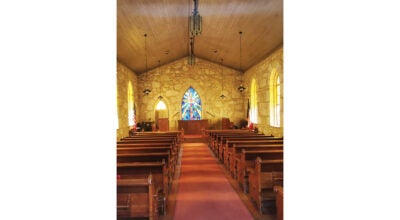Grant works hand-in-hand with Boys and Girls Club, second in a series
Published 6:00 am Monday, January 29, 2001
MONTICELLO — The first objective in the one million dollar 21stCentury Learning Grant received by Lawrence County School Districtwas jump-started in November when another federal grant helped openthe county’s Boys and Girls Club.
Part of the grant proposal suggested the creation of the cluband that the school district would adamantly support it.
It also cited a commitment among the county’s leading residents.Each year since the formation of the Competitive Community Program,programs for the youth were earmarked for high priority. In thesummer of 1998, alumni from previous years met and determined thattheir first priority would be meaningful programs for theyouth.
One effort was a visit to Covington County to observe their Boysand Girls Club in operation. They felt such an operation here wouldbenefit the youth and began working towards that goal.
As the grant proposal was being considered, citizens raisedmoney to start the club. In October, the board of directors of theproposed club received notice they would be awarded a $64,000federal grant. The grant allowed them to start the organization inNovember. By the time the 21st Century Learning Grant was approvedlast week to help organize and establish it, the club had been inoperation for three months.
Now the money included in the new grant will help reinforce theclub and also help in other areas mentioned in the proposal, saidSuperintendent John Bull. Working with the Boys and Girls Club andother county organizations is the best way to approach the problemsyouth experience in the hours after school lets out, he said.
“The fact is that now, with so many parents working, kids arenot studying like they need to,” Bull said. “We feel like afterschool programs can help in that regard.”
Lawrence County youth face a troubled period between the timeschool lets out in mid-afternoon to when their parents arrive hometo take care of them, Bull said. Add in other factors, he said, andthe problem becomes clearer.
“According to a recent survey,” Bull said, “approximately 64percent of the students in grades 4-8 are unsupervised for amajority of the time from 3:15 p.m. until 5:30 p.m.
“Additionally, a large percentage of students in grades K-3 aresupervised by students in grades 4-8. More than half of the workingparents in the county do not return home from work until after 5p.m.,” he said.
While some students in grades 9-12 are involved in limitedextracurricular activities at the high school, there are virtuallyno activities for the younger students, Bull said.
“Child care for this period of time is either nonexistent orunaffordable,” he added. “Currently, there are no suitableenvironments after school for either academics or organizedactivities which are available on a regular, predictable schedule.While there have been some isolated attempts to meet students’needs after school hours, there has been no comprehensiveplan.”
Bull hopes the grant will help to change that by meshing theefforts of the school district, Boys and Girls Club and other localorganizations, such as the Boy Scouts and Girl Scouts.
The chief element, however, is the Boys and Girls Club, which ismost closely meshed with school operations. It operates on fourschool campuses throughout the county and is a private, non-profitoperation which receives some financial support from the schooldistrict. It also embodies the district’s After School Program.
“The ASP, which will operate from school closing time until 5:15p.m. Monday through Thursday, will have two basic components,” Bullsaid. “During the academic hour, students who are having difficultyin the classroom will work on instructional intervention strategiesplanned from the Reading/Language Arts or Math InterventionSupplement provided by the Mississippi Department ofEducation.”
The supplements contain three components: benchmarks, which setguidelines on what students should know and be able to do,assessments to determine if the benchmarks are being met and theinstructional intervention strategies themselves, to assiststudents in meeting or exceeding the state and local standards incore academic subjects.
These strategies are be taught by teachers, volunteers and highschool students, Bull said. In addition, students have theopportunity to participate in “enrichment projects,” expandedaccelerated reading, homework assistance, peer study groups and thementor program.
After the academic hour, students participating in the Boys andGirls Club can select from a variety of choices depending on theirinterests, including organized sports, crafts, art, music,activities with other organizations such as Scouts and 4-H clubs,and community service projects. They can choose a differentactivity each day.
Although the Boys and Girls Club is a viable county entityalready, coordinator Linda Jackson said volunteers are alwaysneeded to help with the program or to instruct during the craftsactivities.
Editor’s Note: The next article in the series willexplore the grant’s second objective, to expand and enhance thedistrict’s Parent/Family Center.





